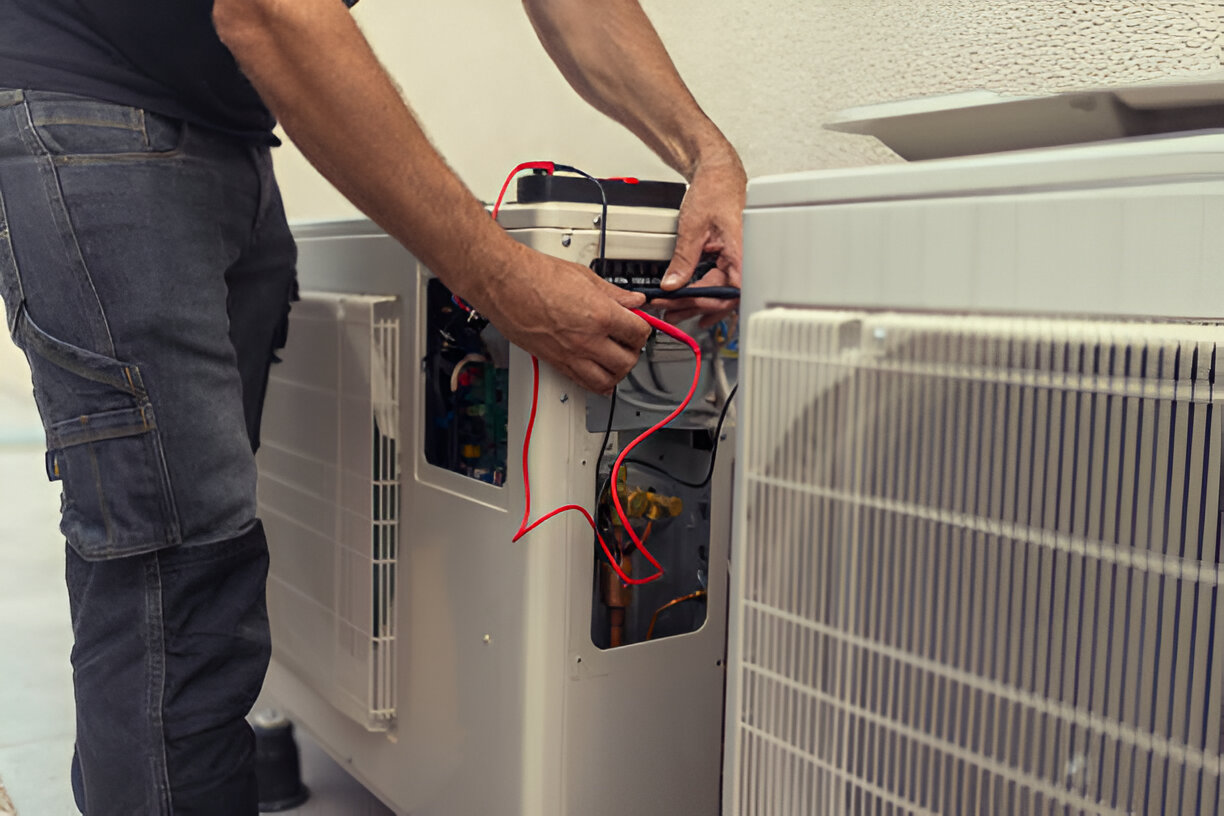Heat Pump Replacement in Queen Creek, AZ
Replacing a failing or inefficient heat pump is one of the most impactful investments you can make in a Queen Creek home. With long, hot summers, dusty monsoon seasons, and temperature swings between day and night, a properly sized, modern heat pump improves comfort, lowers energy use, and reduces the risk of mid-summer breakdowns. This guide walks through the evaluation, sizing, equipment recommendations, permitting, removal, installation timeline, rebates and financing, warranties, and a clear step-by-step replacement process tailored to Queen Creek homeowners.

Why replace your heat pump now?
- Older units lose efficiency and struggle to keep up during Arizona heat peaks, driving up electric bills.
- Dust and debris common during monsoon season can accelerate corrosion and coil fouling, reducing performance.
- Newer heat pumps (variable-speed, inverter-driven) deliver better humidity control, quieter operation, and both cooling and heating with lower energy consumption—beneficial in Queen Creek’s wide temperature range.
- Replacing before a total failure avoids emergency service costs and long wait times during peak seasons.
Common heat pump issues in Queen Creek homes
- Frequent short cycling and uneven cooling across rooms
- Rising electric bills despite normal usage patterns
- Weak airflow from vents or blocked return ducts by dust
- Refrigerant leaks or low refrigerant due to aging lines
- Compressor or capacitor failures after 8–15 years of service
- Corroded outdoor coils and fins from dust and monsoon debris
- Thermostat and control board faults reducing efficiency
What a professional evaluation covers
A thorough replacement begins with a complete site inspection and diagnostics:
- Visual inspection of outdoor condenser and indoor evaporator coil, ductwork, and electrical components
- Assessment of unit age, repair history, and remaining useful life
- Airflow measurements and static pressure checks to evaluate duct performance
- Refrigerant checks to detect leaks or undercharge
- Electrical safety inspection (contactors, breakers, capacitors)
- Review of insulation, attic ventilation, and home envelope that affect load
Load calculations and system sizing
Sizing is the single most important decision for reliable comfort:
- Technicians perform Manual J load calculations that account for Queen Creek’s climate: summer design temperatures, solar gain, insulation, window orientation, and home occupancy.
- Proper sizing prevents short cycling, improves humidity control, and extends equipment life.
- Ducted vs ductless considerations: existing duct condition, layout, and insulation drive recommendations. Duct sealing and balancing are often recommended alongside equipment replacement.
Energy-efficient model recommendations
- Look for high SEER (Seasonal Energy Efficiency Ratio) and high HSPF (Heating Seasonal Performance Factor) units. Variable-speed compressors and inverter technology deliver the best efficiency and comfort control.
- Consider ENERGY STAR rated heat pumps and models with whisper-quiet compressors for neighborhoods with close lot lines.
- For homes with duct losses, high-efficiency ductless mini-splits can be a targeted solution for problem rooms.
- Match indoor coil and outdoor unit manufacturers to ensure warranty compatibility and optimal performance.
Step-by-step replacement process
- Pre-install evaluation and written proposal including load calc, recommended equipment, and timeline.
- Permit submission and approval (see permitting note below).
- Procurement of selected equipment and materials (indoor coil, condenser, line sets, disconnects, pad).
- On-site safety checks and pre-install photos; equipment staging.
- Removal and disposal of the old unit, including safe recovery of refrigerant per environmental regulations.
- Installation of new outdoor unit, indoor coil or air handler, new refrigerant lines if needed, electrical connections, and condensate/drain upgrades.
- Duct sealing, insulation repairs, and airflow balancing as required.
- System charge, startup, and performance verification (temperatures, amperage, static pressures).
- Thermostat setup and homeowner walkthrough on operation and maintenance.
- Final inspection and documentation for warranty registration and any rebate paperwork.
Permit, code, and disposal considerations
- Replacing a heat pump typically requires a mechanical/electrical permit in Queen Creek. Permits ensure code-compliant wiring, combustion air (if applicable), and safe refrigerant handling.
- Licensed technicians handle permit submissions and coordinate municipal inspections when required.
- Refrigerant recovery and disposal of old equipment are performed to EPA standards; scrap and recycling of metal and components follow local requirements.
Rebates, incentives, and financing
- Arizona homeowners often qualify for manufacturer incentives, local utility rebates, or federal tax credits tied to high-efficiency heat pump installations. Eligibility depends on model efficiency ratings and installation details.
- Many providers and lenders offer financing options to spread payment over time, which can make higher-efficiency upgrades more affordable.
- Keep all invoices and manufacturer spec sheets—these are typically required when applying for rebates or incentives.
Warranties and long-term protection
- New heat pumps include manufacturer warranties for parts and, in many cases, the compressor. Typical coverage ranges vary by brand and registration.
- Labor warranties often range from 1 year and may be extended through maintenance agreements.
- Register equipment with the manufacturer promptly to secure extended warranty benefits when available.
- Regular maintenance (biannual tune-ups) preserves efficiency, protects warranty coverage, and extends system life—especially important in dusty Queen Creek conditions.
Maintenance tips to protect your investment
- Replace or clean filters monthly during heavy use to maintain airflow and efficiency.
- Keep the outdoor unit clear of debris, gravel, and landscaping growth; wash coils gently after dusty periods.
- Schedule professional inspections before summer and winter seasons to check refrigerant charge, electrical components, and duct sealing.
- Consider installing a programmable or smart thermostat to reduce runtime and improve comfort control.
Final considerations for Queen Creek homeowners
A properly executed heat pump replacement tailored to Queen Creek’s climate delivers improved comfort, lower energy bills, and reliable performance year-round. Prioritize accurate load calculations, matched components, and attention to ductwork and outdoor protection from dust and monsoon debris. With the right equipment and professional installation, a new heat pump will be quieter, more efficient, and better suited to the demands of Arizona living.






